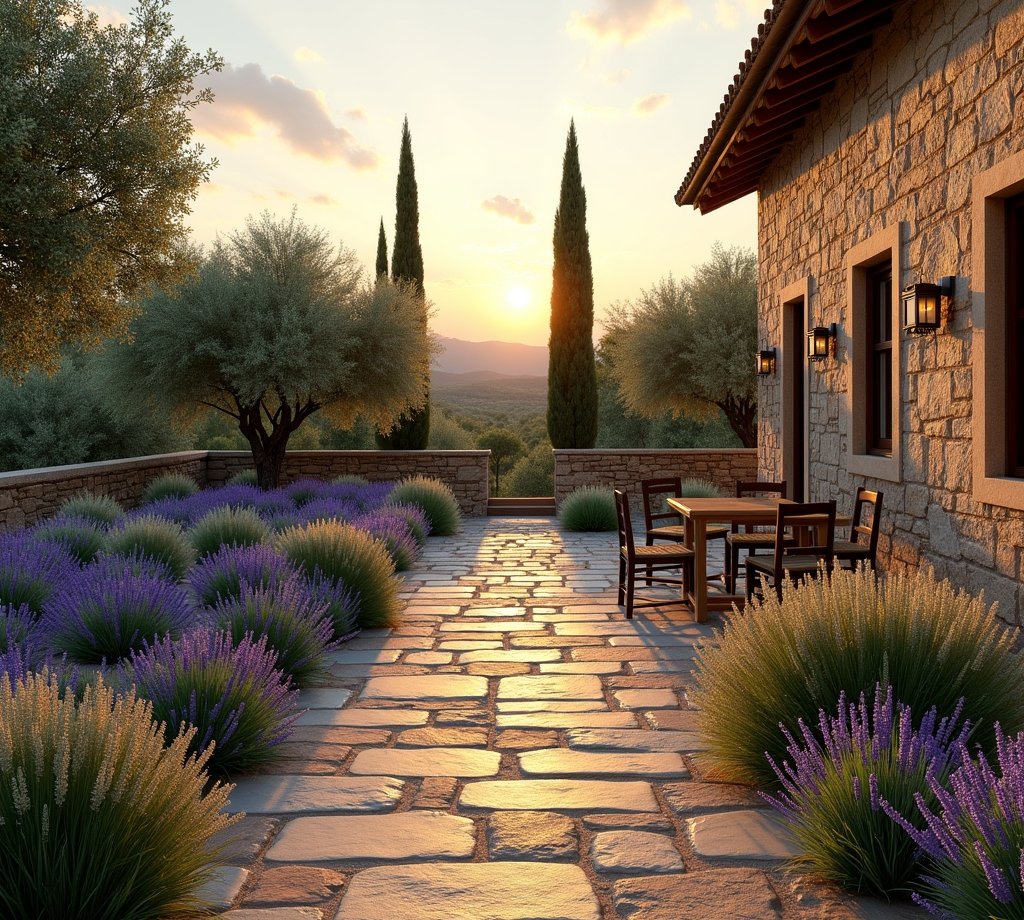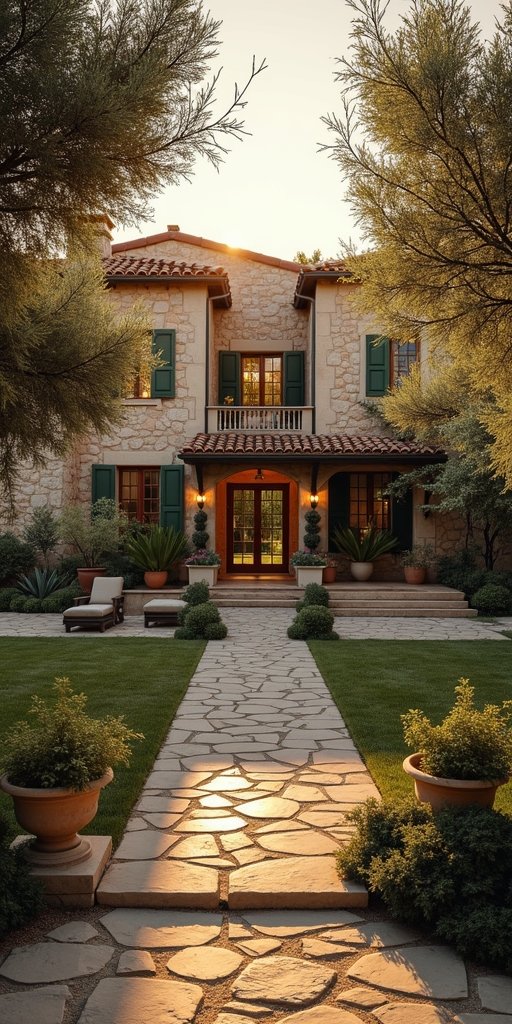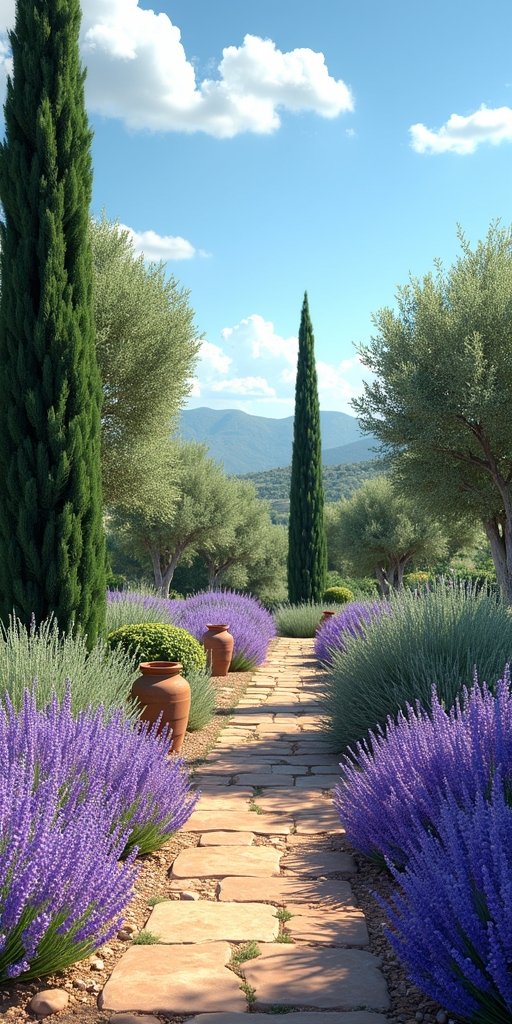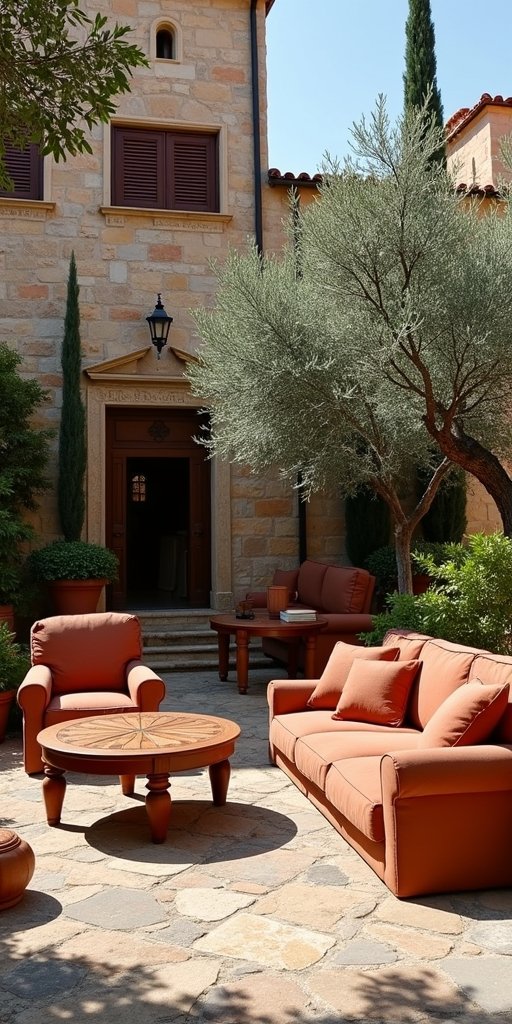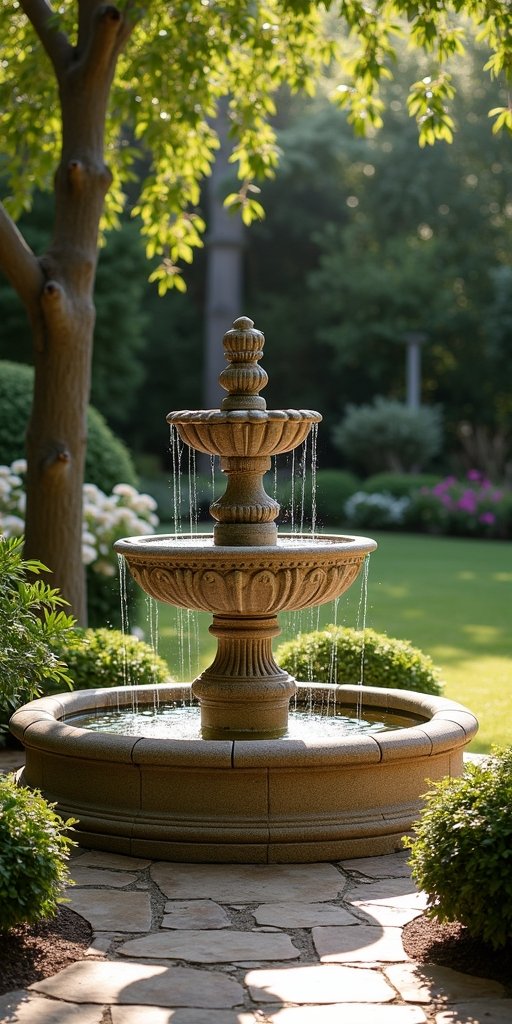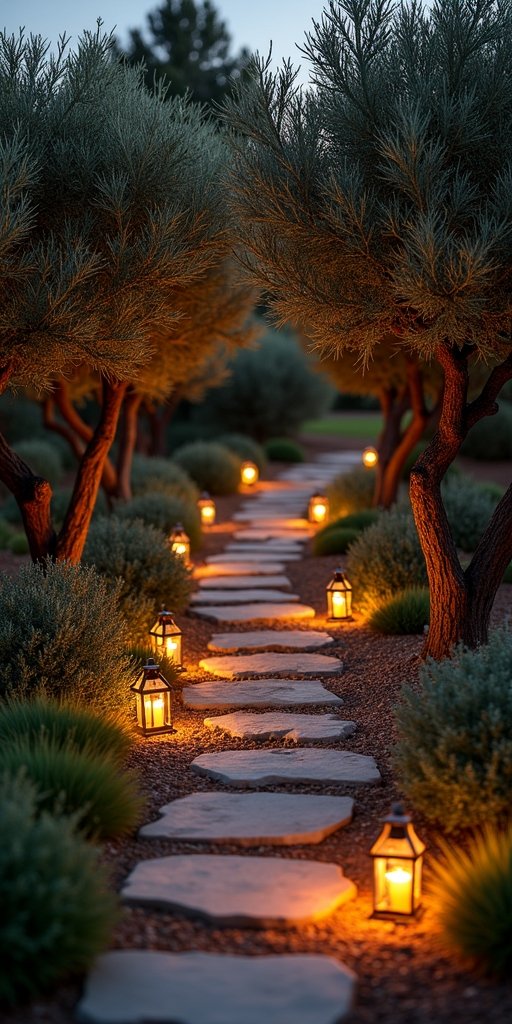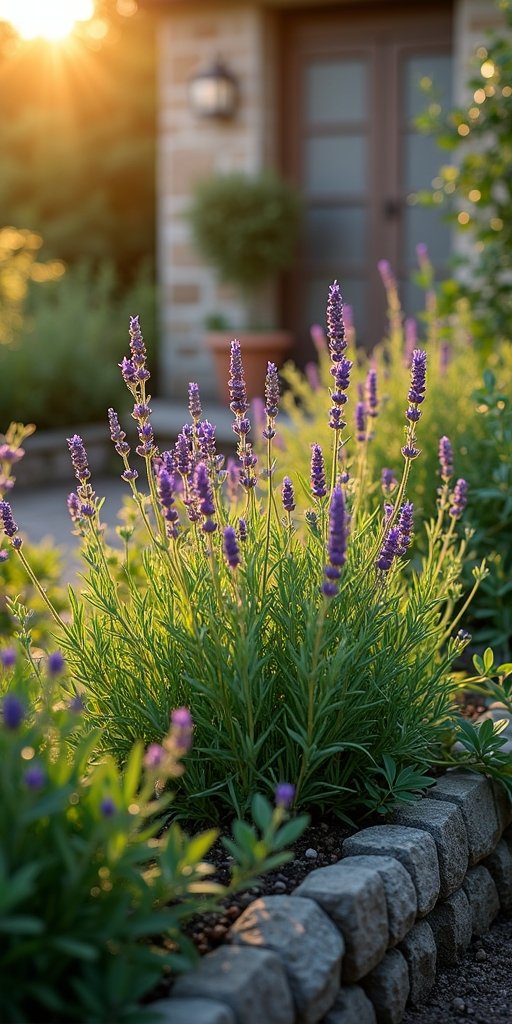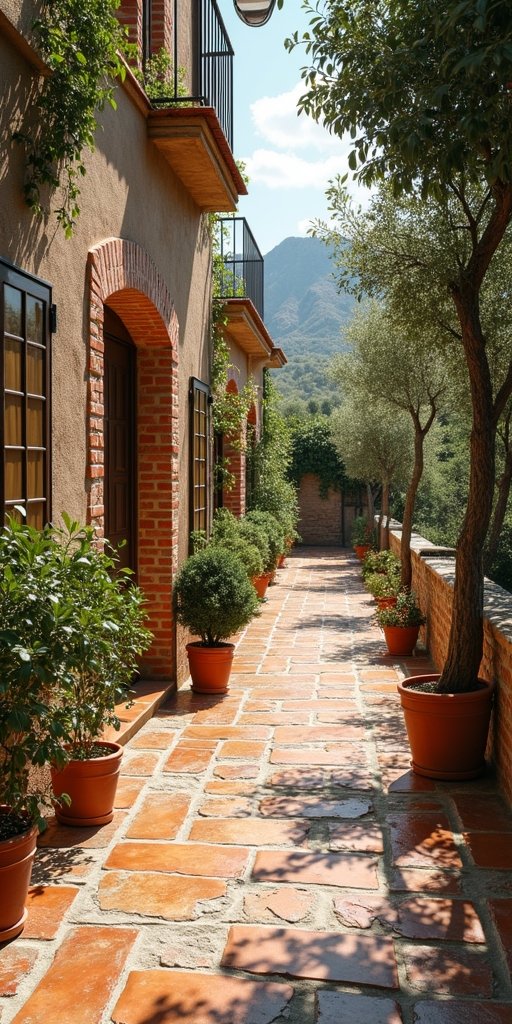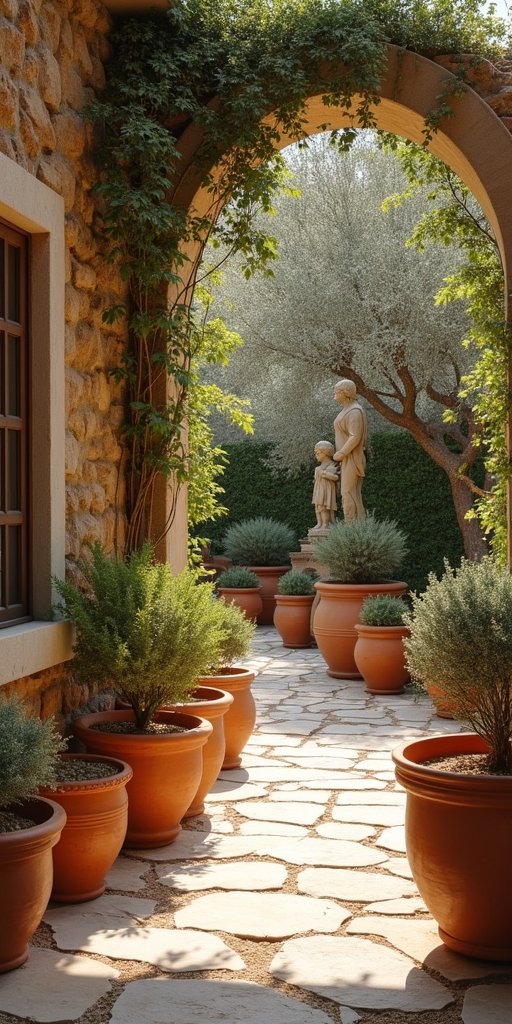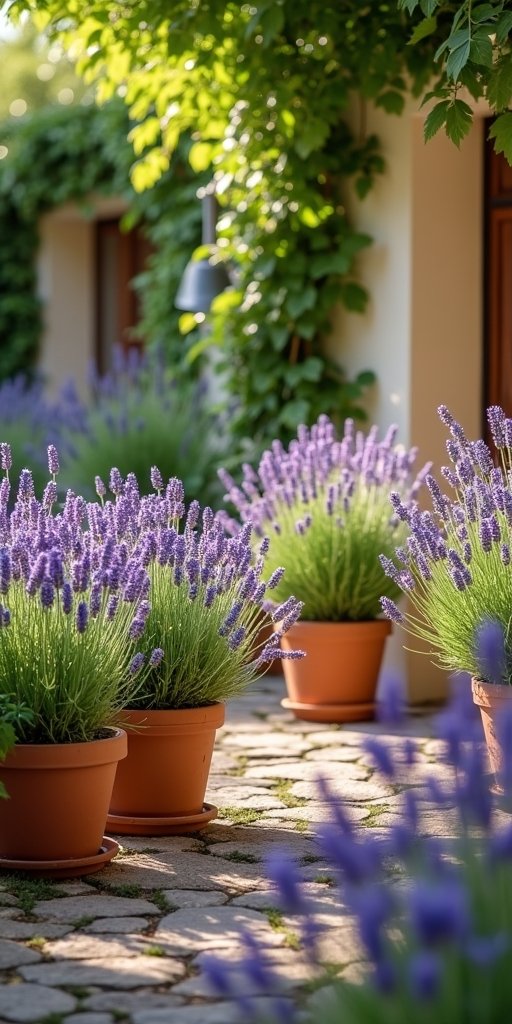The Mediterranean garden enchants with its Mediterranean flair and makes us dream of balmy summer evenings in Tuscany or Provence. Characteristic are sun-loving plants such as lavender, oleander and olive trees, combined with natural materials such as terracotta, natural stone and rustic wood.
If you want to bring a piece of the Mediterranean into your own garden, you can achieve this with a few targeted design elements. It does not depend on the size of the garden area – even in a small space, a terrace or a balcony, a Mediterranean ambience can be created. With the following 12 ideas, you can transform your outdoor area into a southern oasis of well-being.
Mediterranean Garden Design – An Overview
Water plays an important role in the form of small fountains or water features and provides pleasant cooling. The choice of materials focuses on natural stone, fired bricks and light wood, while the colour palette ranges from sand tones to terracotta and bold blue. Seating invites you to linger and rustic accessories such as amphorae or clay pots complete the Mediterranean ambience.
Typical plants for the Mediterranean garden
Cypresses, which serve as vertical accents, and bougainvilleas with their lush floral splendour are also suitable for Mediterranean design. Stone elements such as terracotta pots, natural stone walls and gravel surfaces complement the planting and create authentic Mediterranean flair. Grasses such as pampas grass or lamp cleaner grass round off the overall picture harmoniously.
Mediterranean garden furniture and seating
A covered terrace with natural stone flooring offers the perfect setting for cosy seating areas in Mediterranean style. Here you can set up shady places to relax, which are entwined with climbing plants such as wisteria or bougainvillea. Vintage lanterns, colourful mosaic tiles and rippling water features create a typical Mediterranean atmosphere that invites you to socialise.
Water features in Mediterranean garden style
Terracotta vessels with aquatic plants, small fountains and water points bordered by natural stones blend harmoniously into the overall picture. The combination of water, stone and Mediterranean vegetation creates a place of peace and relaxation that is reminiscent of an Italian or Spanish garden.
Mediterranean garden lighting for balmy evenings
Large amphorae and clay jugs, which are illuminated from the inside and exude their warm light between rosemary and thyme, are particularly impressive. Embedded in cosy seating areas with natural stone walls, they create a relaxed holiday atmosphere and invite you to linger on balmy summer evenings.
Herbs and aromatic plants in the Mediterranean garden
The robust Mediterranean herbs require little water and cope well with barren, permeable soils. In sheltered, sunny places, they develop their full aroma and healing properties. The combination of different scented and aromatic plants creates an authentic Mediterranean atmosphere and transforms every garden into an aromatic oasis.
Mediterranean garden paths and terraces
The terraces present themselves as extended open-air living spaces, equipped with comfortable seating areas made of rattan or wrought iron. Terracotta pots full of fragrant herbs and flowering geraniums line the seating areas, while pergolas with vines or wisteria provide natural shade. Natural materials such as sandstone or fired clay tiles underline the Mediterranean character and create a harmonious connection between house and garden.
Mediterranean garden decoration and accessories
Colourful glass lanterns, hand-painted tiles and wrought-iron elements set decorative accents. Natural materials such as natural stone, wood and clay dominate the appearance. Climbing vines, citrus trees in pots and lush flower arrangements in Mediterranean colours complete the relaxed atmosphere of the south.
Maintenance of the Mediterranean garden
In winter, Mediterranean plants need special protection from frost and moisture. Sensitive plants such as oleanders or citrus plants should be placed in containers in a sheltered place. Evergreen Mediterranean woody plants can be covered with fleece or brushwood. Drainage in the root area prevents waterlogging, which damages the plants, especially in winter.

